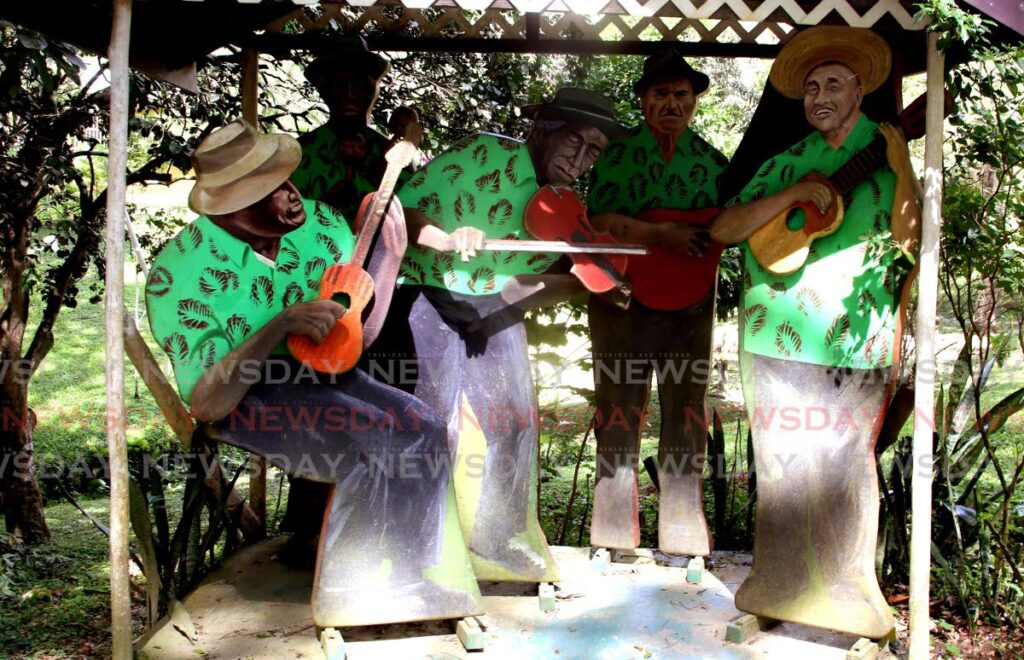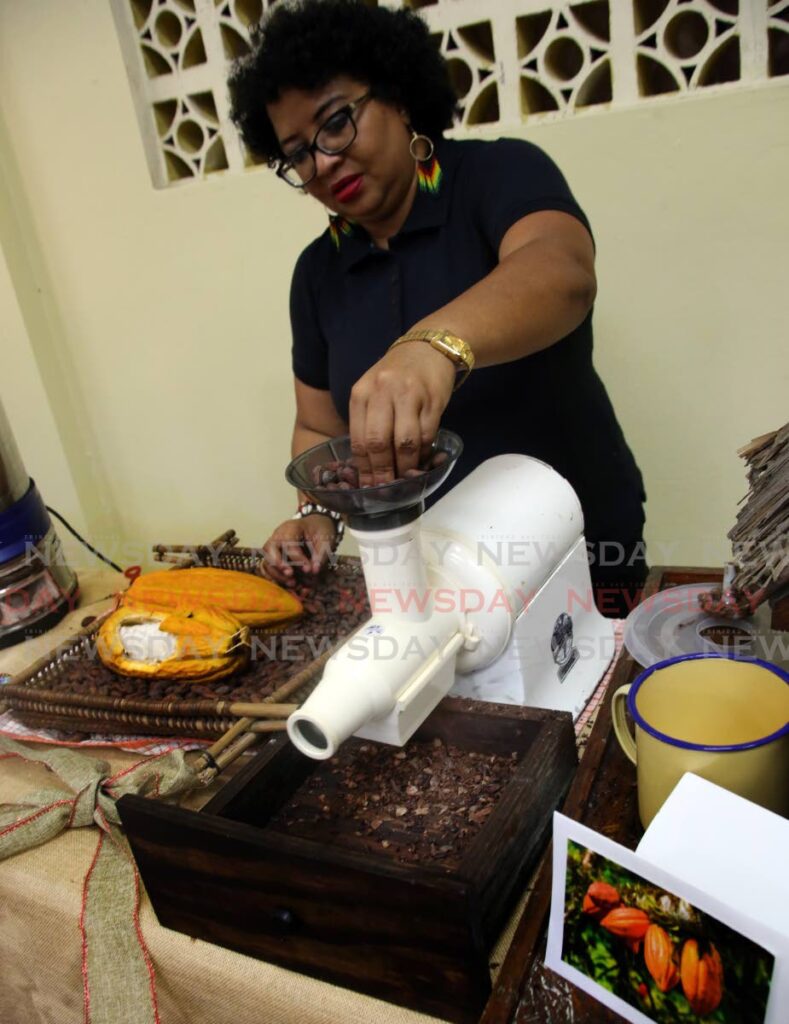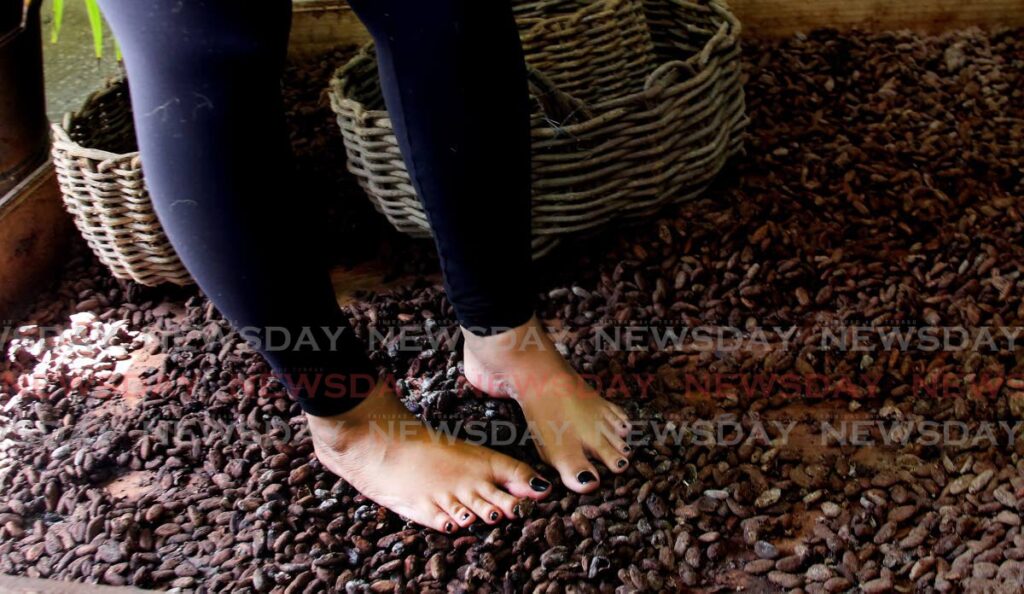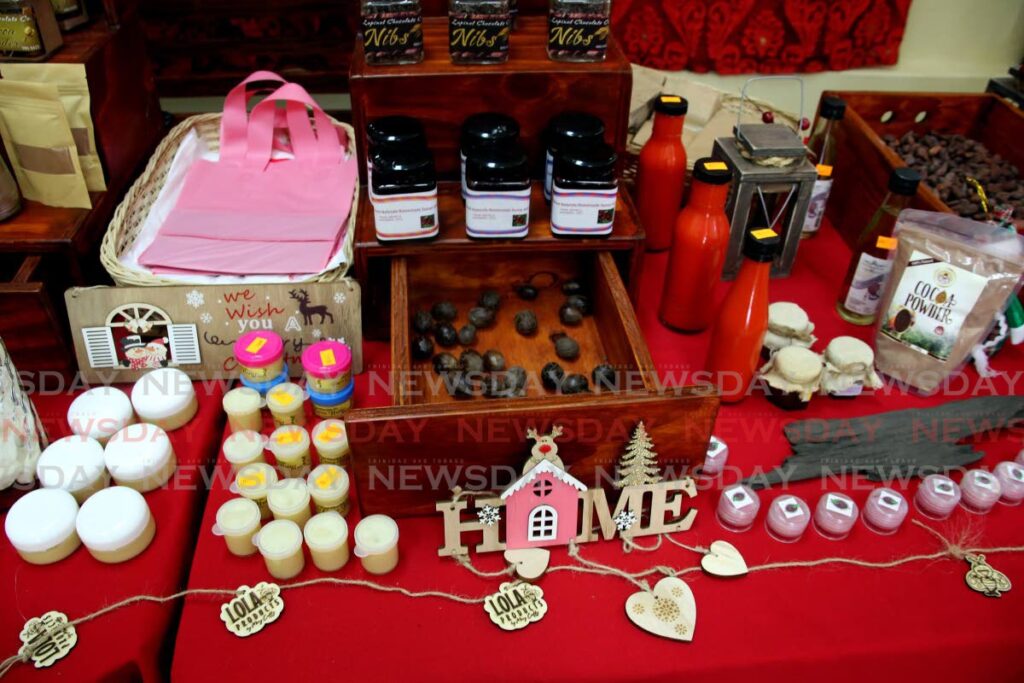The cottage industry: How Lopinot is turning culture to cash

Lopinot’s rich history goes back as far as 500 years before the birth of Christ, when the First Peoples settled in Trinidad and called the island Iere. More recently, the Lopinot Historical Complex, one of the more popular areas in the village, hosted hundreds of thousands of visitors, pre-covid19.
The people living in the village, however, had seen little to no profit from these visitors until the establishment of the Lopinot Tourism Association in 2014, when villagers were encouraged to learn crafts and create local dishes which not only display the village's personality but brings some form of revenue to the people there.
Now, with covid19 putting a strain on the number of visitors to the village and its heritage site, and parts of the site in need of repair and refurbishment, Lopinot residents have come together with the heritage site as their main base to industrialise the village’s rich history, natural beauty and the talents and capabilities of its people.
La Reconnaissance Estate
Lopinot got its name from the Compte de Loppinot, a French lieutenant general and knight of the Military Order of St Louis, and brigadier general of the Trinidad
militia.
Loppinot left France shortly before the French Revolution and served in the French colony of Acadie – now the combined Canadian territories of New Brunswick, Nova Scotia and Prince Edward Island.
Researchers say after the French were expelled from Acadie, he moved to Louisiana, which was French around 1755. In 1762 the territory was ceded to Spain, and Loppinot went to Saint Domingue (now Haiti). As it was one of the sugar giants at the time, Loppinot seized the opportunity to get into the sugar business, making a great success with land, prominence and enslaved people.

But then the Haitian revolution took place and he fled to Jamaica, then settled in Trinidad, where he tried to establish another sugar plantation in Tacarigua, with the permission of Governor Thomas Picton.
That also met with limited success, so the governor gave him permission to claim land in the Northern Range. After searching through the forest he came across what is now known as Lopinot.
“I am sure that when he came here there were lovely poui trees all about, and there was the quiet river nearby,” said Donna Mora, CEO of the Lopinot Tourism Association and managing director of the Lopinot Chocolate Company. “He claimed the land for his own and called it La Reconnaissance Estate, which in the old French language meant 'gratitude.'”
There he built a large cocoa estate with more than 100 enslaved people on 478 acres of land. He also had six children, who left the plantation to pursue their own lives. He died in 1819 at 42, according to the Lopinot heritage site’s record.
Centuries later, his home and other structures from his time still stand. The house is considered the crown jewel of the Lopinot heritage site’s tour and one of the many reasons the site was visited by up to 100,000 people a year pre-covid19. The house also won the Prime Minister's award for best heritage site in 2012, 2015 and 2016.
But the house is in a state of disrepair despite promises by ministers including Lopinot/Bon Air West MP Marvin Gonzales and even the Prime Minister to refurbish it in 2022.
“The roof is made of slate and it is cracking up, so we cannot go into the house. The house was originally done in tapia and was replaced by slate some time ago. The cost of repairs now could go into the millions,” Mora said.
Sharing the beauty and flavour of the village
The house of Lopinot is not the only gem in this tour of culture and natural beauty. Tourists can visit one of five caves – the Gomez Cave, named after Mora’s father, the living parang legend Martin Gomez; the Darceuil Cave; the Colado Cave, named after an escaped enslaved man who was found in the cave shortly after he fled the plantation; and the Yaraba and Devil Hole caves, which have drops up to 20 feet.
Tourists are also treated to tasty sweets made from cocoa and coffee beans grown in Lopinot itself. It is what Mora calls a “cocoa tour,” where visitors can get to see the process of making cocoa, from grinding the bean in a mortar and pestle to adding the cocoa butter and demerara sugar for texture and flavour, and then the finished product – a delicious home-made chocolate bar.
Visitors can also take part in dancing the cocoa, a process in which people dance to drums on mounds of cocoa to polish the beans and to allow air flow so they can dry easily.
“Dancing the cocoa is therapeutic,” Mora said. “People come over and over to just to do that.”

The cost of the tour is $100 for adults and $50 for children.
The site was also visited by the cast and crew of Ghost Hunters, an American TV series which chronicles areas with paranormal activity.
But for all the people who visited, the Lopinot Tourism Association, established in 2014, realised the people of Lopinot saw little to no benefit.
“I would say that was one of the busiest heritage sites, next to Maracas Bay, pre-covid19,” Mora said. “We realised that the tourists were coming, yes, but we weren’t getting anything out of it. So we started to develop a cottage industry.”
Through the association several people, mostly single mothers, were offered development courses and courses in crafts and culinary arts. The association now has five staff members with a network of chocolatiers, culinary artisans and craftspeople that supplies them with jams, soaps, cocoa
products and, of course, chocolate.
“We used to just do the chocolate tours, but people began asking if we had cocoa balls, jams and so on. So we started reaching out to the communities to get goods for people to buy,” Mora said. “We buy cocoa from the farmers in the area – we have business relationships with about 12 farmers.”
“Every farmer has different flavours, so some we use for chocolate, some we use for cocoa balls and cocoa nibs and other things and some we just use to dance the cocoa. We buy products like jams soaps, arts and crafts from the women in the village. Just the day before we had an order for 12 bottles of jam. The person who makes it was very happy for the sale.”
Yvette Garcia, one of the suppliers of jams, said she first started selling goods at a Mayfair at the heritage site 20 years ago.
“I knew that the real chocolate only came from the best cocoa, so for that Mayfair I said to myself I would do the chocolates. When I did it, it sold out. People were asking me why I brought such a little bit,” Garcia said.
She started making jams about ten years ago and sold them at the Lopinot heritage site through the association.
“Guava jam is always a favourite,” she said. “Everyone identifies with it as part of their childhood. I also make sorrel jam, which sells through the year.
"I also make pumpkin jam. People ask if you could actually make jam from pumpkins and when they taste it, it tastes like a fruit. So it is really nice. I like it with Crix.”

She added that sometimes the people who sell at the heritage site also get hosted as a group in Trincity Mall.
Cocoa farmer Joseph Garcia said he regularly supplies the association, along with other customers.
“Recently they had a wedding to do and they needed good quality, so they came to me. I try to supply good quality for them, so when they want good-quality cocoa they come to me,” he said.
Garcia, a 66-year-old retiree, said he grows cocoa to keep his father’s cocoa estate alive and for exercise.
“You get a little change from it, and it is good exercise,” he said. “It is a lot of manual work.”
Even during the downtime of covid19, when public spaces were closed to limit the virus’s spread, Mora and the association found a way to share the beauty of the heritage site, through virtual tours.
“Covid19 hit us really hard,” Mora said. “We understand that it is here and we cannot make much money, so it caused us to think. That is how we came up with virtual tours.”
She said the tours were done with Cedar Grove Primary School, and the tour guides would go through the heritage site and connect through Zoom or another online platform while the students sat in class and looked on, and asked questions.

“It was so successful that we did two,” she said. “We were probably the first heritage site to do something like that.”
She added that the goods and items sold at the heritage site were also put online for digital orders. That resulted in the National Trust calling them and asking for a display for sale at its Port of Spain headquarters, Mille Fleurs.
Association needs support, funding
Mora said despite the strides the association has already made in supporting the community through the heritage site, it still needs support from the Government, firstly in the form of repairs to the house of Compte de Loppinot.
Business Day understands that in 2008 restoration work was done by the Ministry of Works and Transport construction division, and in 2012 the same ministry did more assessment for its overall refurbishment. But because of lack of funding, structural and remedial work is still needed.
Mora said the site also needs signage and repairs to structures such as bridges and benches.
She suggested that if more were charged for services during tours, the association could gather funding
.

“Even if we charged people a dollar to use the bathroom, we would be able to pay for maintenance,” she said. “So instead of saying you don’t have money, it could be self-sufficient.”
While Minister of Agriculture Clarence Rambharat said there simply isn’t enough funding, MP Gonzales made a commitment earlier this year to do whatever could be done for the site. In an earlier Newsday report Gonzales said he was putting together a proposal to have the site restored. This would include proper infrastructure, road repairs and restoring the house.
"Our minister has been working hard to bring our gem back,” Mora said. “He has also advocating for Udecott to do repairs."
The house of the Compte de Loppinot and his vast estate remains one of the most picturesque spots in TT, one that just doesn’t provide a visual experience, but can give visitors a taste of the rich history of TT, along with the richness of the cocoa that the villagers grow.
The association, Mora said, remains committed to taking that rich historical product not just across the island, but around the world.


Comments
"The cottage industry: How Lopinot is turning culture to cash"